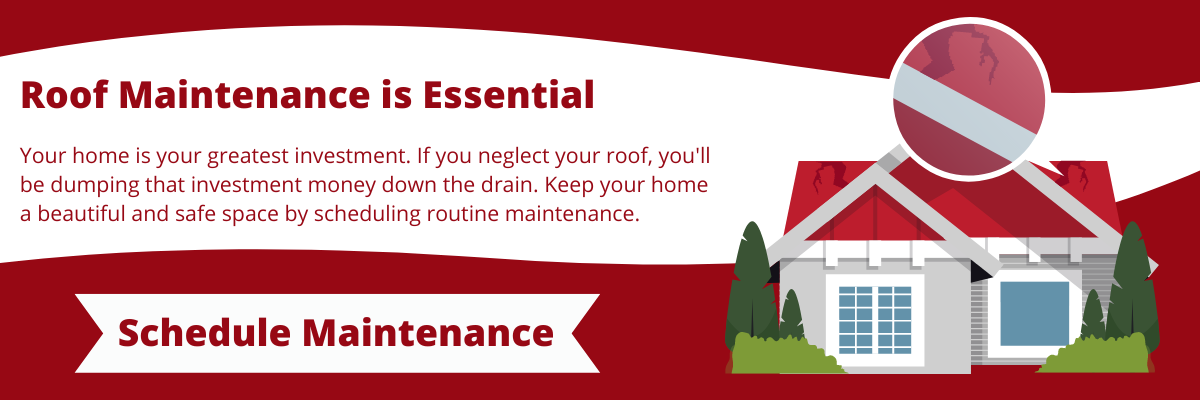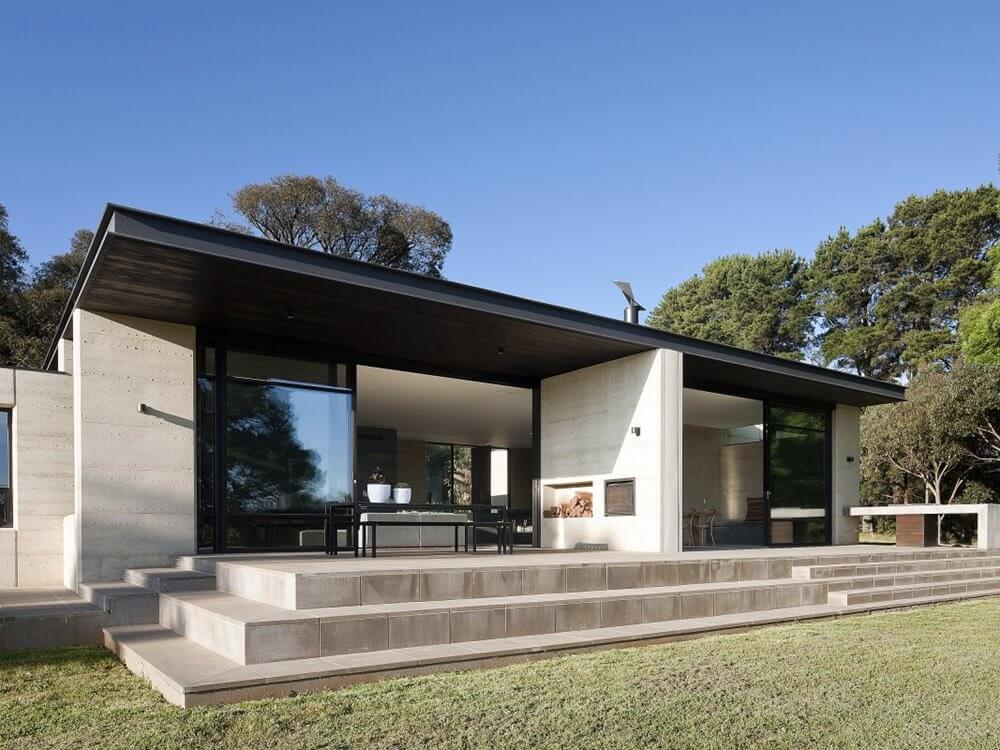
When you think of a roof, the image of a typical sloped frame might come to mind. However, flat roofs have quickly gained popularity in many modern homes and commercial buildings for their aesthetic flare. A flat roof does not have a steep pitch like traditional roofs and is almost level, making it different in appearance and functionality. While flat roofs have their advantages, they also come with unique challenges, one of them being water ponding.
RoofCrafters has been a name in the roofing industry for nearly thirty years. Because there are so many roof types, we understand that it's almost impossible for all of them to function the same way! Flat roofing, because of its minimal slope, has its own unique considerations to keep in mind. When the issue of water pooling occurs, there are some things you should know.
In this article, we'll explore what flat roofing is and delve into the (while common) concerning issue of water pooling. We'll discuss how flat roofs are designed and why water ponding can pose a problem for homeowners. Understanding these aspects will help you make a well-informed decision about your roofing system and ensure the longevity and durability of your home. Let's begin!
What is Flat Roofing?
Flat roofing, as the name suggests, is a type of roofing that is almost level or has a very slight slope. It is a design that is often seen in modern architecture for its aesthetic appeal and functional usage of space. Flat roofs can be made from various materials, including single-ply membranes, built-up roofing, modified bitumen, and more. The choice of material depends on factors like climate, budget, and structural requirements!
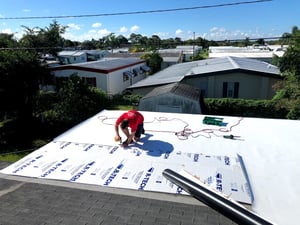
Homeowners opt for flat roofs for several reasons:
- They are cost-effective to install and maintain.
- They create usable space, providing the opportunity for rooftop gardens, solar panels, or even a relaxing outdoor area.
- Flat roofs are easier to access and work on for repairs and maintenance.
What is Roof Water Ponding?
Water ponding on a roof is a situation where water accumulates and forms pools or ponds on the roof's flat surface instead of draining properly. It occurs when the roof doesn't have adequate slope or drainage systems to direct the water away effectively. Flat roofs, despite their name, should have a slight pitch or slope to allow water to flow towards gutters, drains, or scuppers, ensuring efficient water removal. However, water collects in certain areas when this slope is insufficient or obstructed, creating stagnant pools.
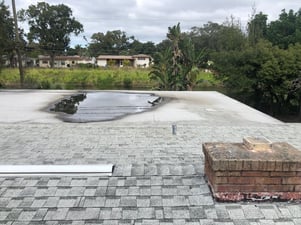
These pools of water can be problematic for several reasons! First and foremost, stagnant water can gradually seep into the roofing material, especially if the roof has small cracks, seams, or weak spots. Over time, this can lead to leaks within the building, causing damage to the interior, weakening the structure, and potentially creating an environment for mold or mildew to thrive. Yikes- you don't want that. Additionally, the weight of the accumulated water can put stress on the roof, particularly if it exceeds the designed weight limits, which may lead to sagging or even structural damage.
To prevent the issues associated with water ponding, it's essential to design and maintain the roof with proper drainage systems, ensuring water flows efficiently off the roof's surface. Regular inspections, appropriate slope design, and timely repairs or improvements can help mitigate the risks posed by water ponding, ensuring a longer lifespan for the roof and the building it protects.
The Issue of Water Ponding Explained
As mentioned above, water ponding occurs when water collects and forms pools on the roof's surface. This happens when the roof doesn't have a proper slope for the drainage system to direct water away. Stagnant water can remain for a long time, harming the roof. It can lead to leaks, weaken the structure, and even damage the insulation inside.
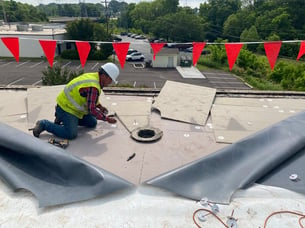
Is Water Ponding Harmful?
Water might seem harmless, but it can be troublesome when it stays in one place for too long. When it pools on a flat roof, it can start to seep through tiny cracks or weak spots in the roof. Over time, this can lead to leaks inside your home. Additionally, the weight of the water can stress the roof's structure, making it weaker and potentially unsafe.
How to Fix Water Ponding
If you notice water ponding on your flat roof, it's essential to take action. Here's what you can do:
- Inspect Your Roof Regularly: Keep an eye out for any signs of water ponding. Check your roof after rain to see if any water is staying.
- Improve Roof Slope: If possible, adjust the roof's slope to allow water to flow off easily. A slight slope can make a big difference. This is a job for a roofer, however, so contact one to begin this process!

- Clean Gutters and Drains: Ensure that gutters and drainage systems are clear of debris so that water can flow freely.
- Consult a Professional: If water ponding continues to be a problem, it's best to consult a roofing professional. They can provide expert advice and suggest appropriate solutions.
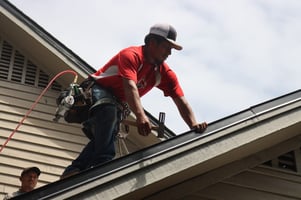
Remember, addressing water ponding promptly is crucial to protect your home and maintain the longevity of your flat roof. Stay vigilant, take action, and ensure your flat roof remains in excellent condition for years to come.
Should I Address Water Ponding on My Flat Roof?
Absolutely! Understanding flat roofing and the potential problem of water ponding is vital for homeowners. While flat roofs offer numerous advantages in terms of cost, usability, and maintenance, it's crucial to address the issue of ponding to maintain the roof's integrity.
Regular inspections, proper drainage systems, and appropriate slope design are key aspects that homeowners should focus on to mitigate water ponding and ensure a long-lasting, efficient flat roof. Stay informed and proactive to make the most out of your roofing investment and keep your home safe and protected.
If you live in one of our service areas, help is right around the corner! When you're ready, visit our contact page to connect with one of our friendly RoofCrafters representatives. We're thrilled to give you a helping hand when it comes to your roofing project!
My name is Kevin Mills, and I am the lead estimator for RoofCrafters’ Tampa division. I’m originally from Michigan, and I enjoy hunting, fishing, and spending any free time outdoors. What I’m most passionate about, though, is helping business owners and homeowners alike achieve their roofing goals, all while providing a seamless customer journey.



